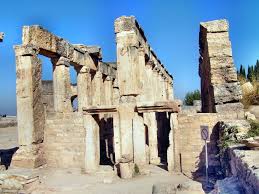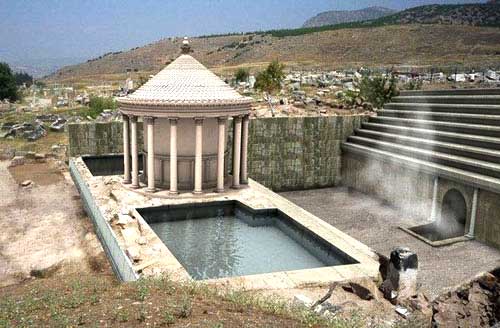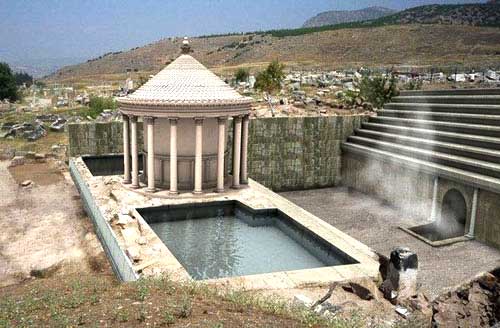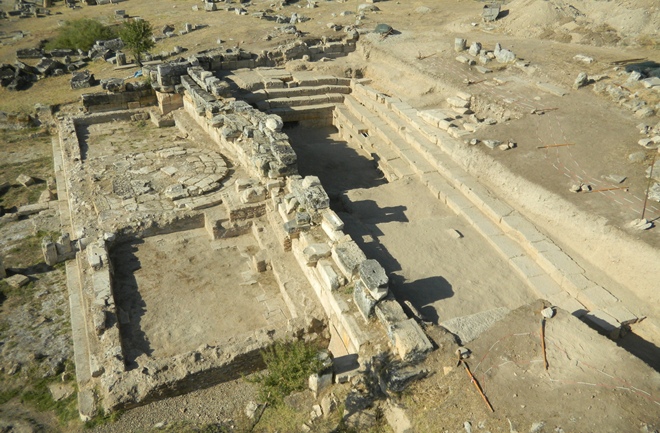Historical records have located the site in the ancient Phrygian capital city of Hierapolis, now known as Pamukkale, and describe the gate as being filled with deadly poisonous gas.Dubbed "Pluto's Gate", Ploutonion in Greek, or Plutonium in Latin, the newly discovered cave is believed to be a link to the underworld in Greek mythology.
“The place was filled with a gas so dense that the ground could hardly be seen. Any animal that passed through that gate met an untimely death,” according to the Greek geographer Strabo (64-63 BC to about AD 24).
“I threw the safe in there, and they immediately dropped dead,” he continued, according to the news site.The Huffington Post.

Computer model of the gates of hell
The discovery was announced at an archaeological conference in Istanbul, Türkiye, in research led by University of Salento professor Francesco D'Andria.
Dr. D'Andria has been conducting extensive archaeological work at the Hierapolis World Heritage Site. Two years earlier, he had also announced that he had discovered the tomb of St. Philip, one of the 12 apostles of Jesus Christ.

Founded around 190 BC by King Eumenes II (197 BC–159 BC), Hierapolis fell to Rome in 133 BC. The Hellenistic city thus developed into a full-fledged Roman city, complete with temples, theaters, and hot springs believed to have miraculous healing properties.
“We discovered the Plutonium by recreating the flow of the hot springs. In fact, the famous springs of Pamukkale all originate from this cave,” said expert D'Andria.

The area is now reduced to rubble, likely caused by an earthquake, and the more scientists excavate, the more remains they find.Archaeologists have found stone pillars, engraved with inscriptions praising the gods of the underworld, Pluto and Kore.
D'Andria also discovered the remains of a temple, a swimming pool and a flight of stairs above the cave, all of which matched the description of the "gateway to hell" in long-standing books.“Visitors can visit the shrine from these steps, but they cannot get close to the cave entrance. Only the priests stand in front of the cave entrance,” D'Andria explained.
According to archaeologists, many pilgrims attend the services that attract visitors. They release small birds into the cave to experience the death of this place, while the priest sacrifices cows in the name of Pluto. The ceremony includes leading cattle into the cave and then dragging their carcasses out. All because of the dense CO2 gas in this place.
Only the eunuchs of Cybele, the goddess of fertility, were able to enter the gate unharmed. They simply held their breath for as long as possible, thus proving that they had been divinely empowered.
According to expert D'Andria, the toxic gas in the cave creates hallucinations, attracting people who want to temporarily possess the prophetic ability of the god Delphi.However, like other places of worship, Plutonium, after a period of prosperity, gradually fell into oblivion, and was destroyed by Christians in the 6th century.
Eventually, nature engulfed the place with numerous earthquakes.




































